Synchronous approach
This section presents a brief description of the main syncronous languages
as well as pointers to documentation, online information and people. In general
the description was taken from the home web page.
Esterel
Esterel is a programming language dedicated to control-dominated
reactive systems, such as control circuits, embedded systems, human-machine
interface, or communication protocols. It is also a compiler which translates
Esterel programs into finite-state machines. It belongs to the family of synchronous
languages, which also includes Lustre, Signal, and SyncCharts. Esterel has
been developed since 1983 at CMA (Applied Mathematics Center, Ecole des Mines
de Paris), and INRIA in Sophia-Antipolis.
The language has a rigorous mathematical semantics. The toolset
includes a compiler to software or hardware, a graphical simulator, a verification
system, and optimizers. In particular the Esterel v5 compiler can be used
to generate a software or hardware implementation of a reactive program. It
can generate C-code to be embedded as a reactive kernel in a larger program
that handles the interface and data manipulations. It can also generate hardware
in the form of netlists of gates, which can then be embedded in a larger system.
Extensive optimization is available. We provide a graphical symbolic debugger
for Esterel. We also provide support for explicit or BDD-based verification
tools that perform either bisimulation reduction or safety property checking.
Esterel is now experimentally used by several companies and
taught in several universities. Esterel and SyncCharts are commercialized
by the Simulog company. They are used by companies such as Dassault Aviation
for avionics, Thomson for telecommunication, Texas Instruments for DSP circuits
development, etc. Cadence and University of California Berkeley are using
Esterel in their Polis hardware / software codesign environment. CMA and INRIA
also cooperate with Synopsys and Intel on Esterel.
HOME page http://www.esterel.org/,
http://www-sop.inria.fr/meije/esterel/esterel-eng.html.
Information
ps, ps2.
People 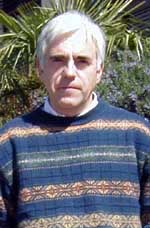
Gerard
BERRY
Lustre
LUSTRE is a synchronous declarative language for programming
reactive systems. It is declarative because a description is a set of equations
that must be always verified by the program variables. This approach was inspired
by formalisms familiar to control engineers, like systems of differential
equations or synchronous operator networks (block diagrams). A program variable
in LUSTRE is considered to be a function of multiform time: it has an associated
clock which defines the sequence of instants where the variable takes its
values. LUSTRE is the kernel language of the SCADE (formerly SAO+/SAGA) industrial
environment developped by Telelogic.
The design of LUSTRE started in 1984. Since then, the following
topics have been studied:
HOME page http://www-verimag.imag.fr/SYNCHRONE/lustre-english.html
Information
ps.
People 
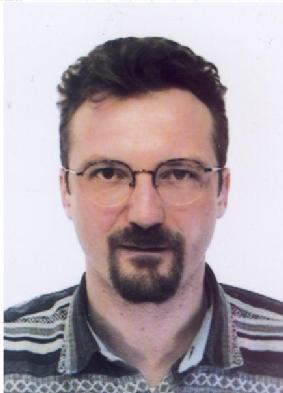
Paul
CASPI Pascal RAYMOND Nicolas
HALBWACH
Signal
Signal is a data-flow language (although not in the exact sense
of Kahn's process networks). So the objects are flows, i.e., infinite sequences
of values. They are called signals. Each signal has a clock which is the sequence
of instants where the signal has a value. At any instant of its clock, a signal
can be present and have a defined value, or be absent and have the value bot.
Signal is a declarative language. So signals are defined by
equations that specify their properties. The order of the equations is irrelevant.
Signal is a synchronous language. So all the events (i.e., the
values of all the signals) are totally ordered.
Signal is a relational language. So the way a signal is used
can have consequences on the signal itself (actually on its clock).
Unlike in Lustre, there is no global clock. Instead, the notion
of clock is local. If two signals have the same clock, then whenever one has
a value, the other one must also have one, and when one has no value (i.e.,
a bot), the other one must also have a bot.
Information
html1, french
web pages html2, html3, html4,
html5,
ps.
Lucid
Synchrone
Lucid Synchrone is a synchronous stream language dedicated to
the implementation of reactive systems. It combines features of Lustre and
ML languages. The name Lucid Synchrone is built from Lucid a data-flow language
managing streams and from the French word ''synchrone'' (for ''synchronous'').
The main features of the language are the following:
-
It is a strongly typed, higher-order functional language
managing infinite sequences or streams as primitive values. These streams
are used for representing input and output signals of reactive systems.
These streams are combined with a set of synchronous data-flow operators
in the spirit of Lustre.
-
Several static analysis (e.g, type inference, clock calculus,
causality, initialization check) are provided. In particular, the language
is founded on the notion of clocks as a way to specify different execution
rates in a program. The program must in turn verify some clocking rules,
insuring reactivity (i.e, compilation into a finite transition system).
-
The language is built above Ocaml: programs are written
in a sub-set of Ocaml syntax; combinatorial values are imported from Ocaml;
programs are compiled into Ocaml code.
-
A simple module system is provided for importing values
from the host language Ocaml or from other synchronous modules.
HOME page http://www-spi.lip6.fr/softs/lucid-synchrone.html/
Information html,
ps,
ps.gz,
pdf.
People Marc
POUZET, Grégoire HAMON
StateCharts
David Harel introduced statecharts to extend finite state machine
for complex behavior and to describe a visual formalism. Objectcharts were
then presented by Derek Coleman et.al. as an extension to describe how to
use statecharts in object-oriented environment to describe the lifecycle of
an object. Statecharts were used by Bran Selic as an implementation mechanism
for Recursive Control. Alternatively, we perceive that statecharts are frequently
used as a behavior description technique and using an object-oriented design
of statechart provides flexibility at the design level and facilitates the
design maintainability.
Statechart is a specification language which enables you to
construct a model and further check it. Some case tools allow you to genertae
code from your specification. Using the generated code might not be useful
because it is usually bulky and not comprenhensible for the designer. Thus
you want to translate the specification into design that allow you to have
a higher level of maintenance and to embed this design into your overall application
design.
StateCharts adds four elements to finite state machine: depth,
orthogonality, broadcasting and history, thus
Statecharts
= State Machine + Depth + Orthogonality + Broadcasting + History
Information html,
pdf.
People 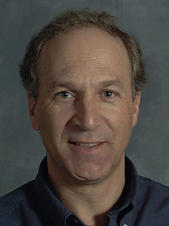
David
HAREL
SyncChart
SyncCharts is a graphical formalism dedicated to reactive System
Modeling. Many features are inherited from StateCharts (D. Harel) and Argos
(F. Maraninchi). SyncCharts allows the specification of reactive behavior,
as well as the synchronous programming of applications. SyncCharts adheres
to the "Synchronous Paradigm". It supports
Any syncChart can be automatically translated into an Esterel
program (esterel v5), so that, the user can take advantage of the software
environment developed for synchronous programming.
HOME page http://www-sop.inria.fr/meije/esterel/syncCharts/
Information
ps.gz,
pdf
People 
Charles
ANDRE
Argos
Argos is an imperative synchronous language developped at the
VERIMAG laboratory. Argonaute is the programming environment based upon Argos,
which provides a compiler and several connections to verification tools.
Argos is first inspired by D. Harel statecharts. It offers both
a graphical and a textual syntaxes. The main differences with statecharts
are the use of a truly hierarchical composition operator which does away with
inter-level transitions used in statecharts, and the application of a strict
synchrony assumption. Argos is the basis of the programming environment Argonaute
which provides a compiler and allows a lot of connections to verification
tools. Developments on Argos are carried out in the following directions:
-
Compilation: Several efficient compilation
techniques have been studied. The current version of the compiler produces
labeled transition systems in different formats that can be used for code
generation, simulation or verification. A new version is under development:
Argos programs are now compiled into sets of structured equations. This
symbolic compiling technique is much more efficient than the explicit generation
of labeled transition systems.
-
Connections to tool : The compiler may produces
several output formats.
- The common oc format for code generation and simulation
- An automaton format that can be used for verification with Aldebaran
- Timed automata that can be verified by using Kronos. This model is generated
from Timed ARGOS, an extension of the language by adding a timeout construct.
-
Multilanguage Programming: The aim is to
study and implement two mixed languages: Argos + Esterel and Argos + Lustre.
Mixing Lustre and Argos would allow a mixed imperative/declarative style
for programming reactive systems. Mixing Argos and Esterel can be viewed
as a way of introducing a automaton-like control structure in Esterel.
HOME page http://www-verimag.imag.fr//SYNCHRONE/argonaute-english.html
Information
ps.gz.
People 
Florence
MARANINCHI
SL
The SL language is a synchronous language in which reactions
are instantaneous. Its syntax is close to esterel, but in SL hypotheses about
signal presence/absence are disallowed. One decides that a signal is absent
during an instant only at the end of this instant, and so reaction to the
absence is delayed to the next instant.
Sources of causal circularities (the so-called causality cycles)
are avoided, and the main features of the synchronous approach still remain:
the expressive simplicity and power of parallelism, the ease of specification
and debugging for deterministic programs, and the power and modularity of
broadcast and instantaneous dialogs. However, "strong" preemptions are not
possible in SL, and only "weak" ones can be used.
Forbidding immediate reactions to signal absences simplifies
the implementation to a large extent (the existing implementation is less
than 1000 Reactive-C lines). In addition to directly execute programs, the
implementation can also be used to produce automata by symbolic evaluation.
Information html1 html2/ps.gz.
People 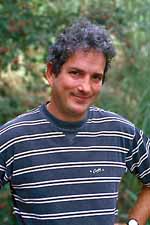
Robert
DeSimone
ECL
ECL is a language for embedded system specification. ECL stands
for Esterel-C Language; the term is used both for the language and its compiler.
The language is ANSI-C with added constructs inspired by Esterel for specifying
reactivity (signal communication, pre-emption, and concurrency). It conveniently
supports specification of mixed control/data modules. The compilation is performed
by splitting the source code into reactive Esterel code and data-dominated
C code. The reactive portion can be robustly optimized and synthesized to
either hardware or software, while the C residual code must be implemented
in software as is.
ECL was developed by Luciano Lavagno, Roberto Passerone, and
Ellen Sentovich.
HOME page http://ecl.sourceforge.net/
http://www.sourceforge.net/projects/ecl
Information
ps.
People 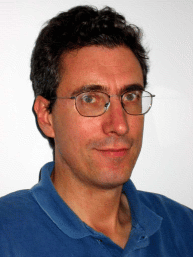

Luciano
LAVAGNO Ellen M. SENTOVICH Roberto
PASSERONE
Reactive-C
The project started in 1988 with the idea of allowing a programming
style close to C, in which program behaviors are defined in terms of reactions
to activations. Reactive-C (RC) programs can react differently when activated
for the first time, for the second time, and so on. Thus a new dimension appears
for the programmer: the logical time induced by the sequence of activations.
Each pair of activation/reaction is called an instant, and the reactive approach
is thus an approach in which one reasons by reference to instants.
The present RC compiler is the rcc version 3 compiler. It works
as a pre-processor of C, and is about 2500 lines of Ansi-C. It runs on several
Unix platforms and also on DOS/PC. It is free software. Actually, Reactive-C
appeared rapidly as being a kind of reactive assembly language that could
be used to implement higher level formalisms based on the notion of an instant.
Several formalisms have been implemented using RC: Nets of Reactive Processes,
SL.
HOME page http://www-sop.inria.fr/meije/rc/general-presentation.html
Information ps1,
ps2.
People Fréderic
BOUSSINOT
SugarCubes/Junior
SugarCubes is a set of Java classes for implementing:
-
event based systems, especially those where events
are instantly broadcast throughout the system. Communicating in this framework
is like in radio transmissions, where emitters send information that is
instantaneously received by all receivers.
- concurrent systems, in particular thread-less ones. Here, parallelism
is a logical programming construct to implement activities which are supposed
to proceed concurrently, and not one after the other.
- reactive systems, which continuously react to activations.
SugarCubes is used to implement Reactive Scripts and Icobj Programming
on top of the Java language.
Junior (Jr, J for Java and r for reactive) is
a kernel for reactive programming in Java. It is closely related to SugarCubes,
and can be seen as kernel of it. Junior is developped jointly by EMP-CMA,
Inria, and France Telecom/ R&D. Junior is available for programming through
an API called Jr. Junior has a formal semantics (expressed with rewriting
rules in the format of strutural operational semantics) and several implementations.
A first implementation, called REWRITE, is the direct implementation
of the semantics. It is thus the reference implementation. In REWRITE, the
program syntax tree is analysed and rebuilt at each activation. A second implementation,
called REPLACE, avoids program rebuildings and is thus much more efficient
than REWRITE. The technics used by REPLACE is actually very close to the one
of SugarCubes. A third implementation, called SIMPLE, avoids the traversal
of the whole program at each activation. Instructions waiting for an event
are posted in a file associated to the event. Thus, posted instruction are
no more processed until the firing event becomes generated. This leads to
the possibility of using huge numbers of events while preserving good response
time.
Junior is presently used in several contexts: implementation
of Rhum, a language for reactive programming developped at France Telecom
R&D; implementation of icobj programming and of the REJO/ROS reactive agents
system developped at CMA/Inria. Junior is also used in the Ping IST Project.
HOME page http://www-sop.inria.fr/mimosa/rp/
Information pdf
(Jr), pdf
(SC).
People Jean-Ferdinand
SUSINI








